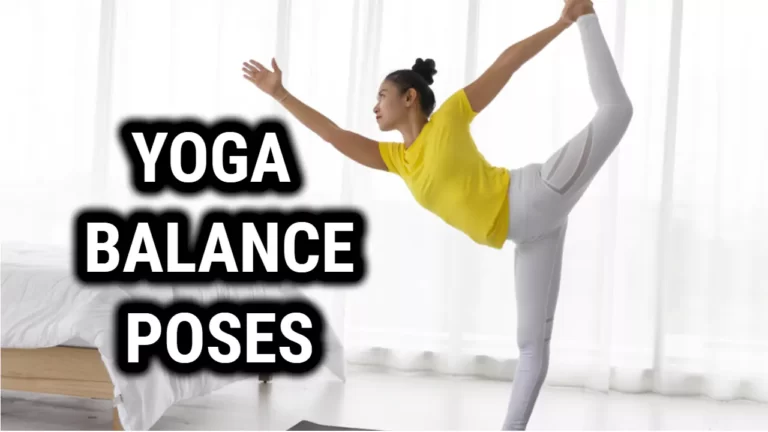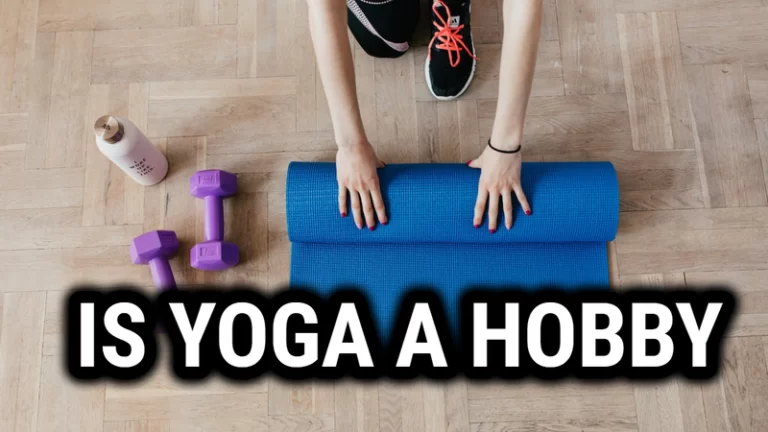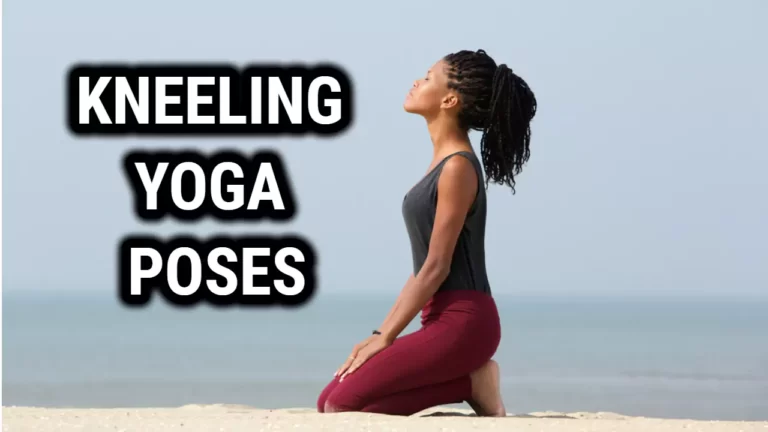11 Yoga Swing Poses For Beginners

Yoga Swing, also known as aerial yoga or anti-gravity yoga, is a unique form of yoga that uses a hammock or swing to support the body during various yoga postures. This allows for deeper stretches, increased flexibility, and a fun and challenging way to practice yoga.
Here, we will explore the benefits of using a Yoga Swing, who can use it, and provide a step-by-step guide to 11 Yoga Swing poses for beginners.
Benefits of using a Yoga Swing
Using a Yoga Swing has many benefits, including:
- Decompression of the spine: Inverted poses with the Yoga Swing can help lengthen and decompress the spine, which can relieve back pain and improve posture.
- Increased flexibility: The support of the Yoga Swing can help you get deeper into stretches, which can improve your flexibility over time.
- Improved balance and core strength: The instability of the Yoga Swing requires you to engage your core muscles and can improve your balance and stability.
- Reduced stress and anxiety: The gentle swinging motion of the Yoga Swing can help calm the mind and reduce stress and anxiety.
- Fun and challenging workout: Using a Yoga Swing can add a fun and challenging twist to your yoga practice, keeping things interesting and engaging.
Who can use Yoga Swing
Anyone can use a Yoga Swing, but it is important to note that it is not recommended for individuals who are pregnant, have high blood pressure, or have any medical conditions that may be aggravated by inversion or suspension.
If you are new to Yoga Swing, it is also important to start with beginner poses and work your way up to more advanced poses as you become more comfortable and confident.
Preparing for Yoga Swing
Before you start using a Yoga Swing, it is important to take the necessary precautions to ensure your safety.
Setting up your Yoga Swing
Setting up your Yoga Swing is easy and can be done in just a few simple steps:
- Find a sturdy anchor point: Choose a sturdy anchor point, such as a beam or sturdy hook, that can support your body weight.
- Adjust the height: Adjust the height of the Yoga Swing so that it hangs at hip level.
- Adjust the length: Adjust the length of the Yoga Swing so that it is long enough for you to comfortably sit or lie down in it.
Safety precautions before using Yoga Swing
Before using a Yoga Swing, it is important to take the following safety precautions:
- Check the anchor point: Make sure the anchor point is secure and can support your body weight.
- Wear appropriate clothing: Wear comfortable, form-fitting clothing that allows for ease of movement and does not get caught in the Yoga Swing.
- Use proper form: Use proper form and technique when performing poses to prevent injury.
- Listen to your body: If a pose feels uncomfortable or painful, ease out of it immediately.
Warm-up exercises before starting Yoga Swing
Before starting your Yoga Swing practice, it is important to warm up your body with some gentle stretches to prevent injury and prepare your body for the poses.
Some examples of warm-up exercises include:
- Cat-cow stretches
- Child’s pose
- Downward-facing dog
- Sun salutations
11 Yoga Swing Poses for Beginners
Now that you are familiar with the benefits of using a Yoga Swing and have taken the necessary safety precautions, it’s time to get started with some beginner poses.
Pose 1: Seated Wide Angle Stretch
- Start by sitting in the Yoga Swing with your legs extended out in front of you.
- Slowly spread your legs as wide as you comfortably can.
- Lean forward from the hips, keeping your back straight and your arms extended.
- Hold for 30 seconds to one minute, breathing deeply and relaxing into the stretch.
- To come out of the pose, slowly release the stretch and bring your legs back together.
Pose 2: Seated Forward Bend
- Start by sitting in the Yoga Swing with your legs extended out in front of you.
- Place your hands on the swing, palms down, and gently lift your hips off the swing.
- Slowly lower your hips and torso forward, allowing your head to hang down towards your legs.
- Hold for 30 seconds to one minute, breathing deeply and relaxing into the stretch.
- To come out of the pose, slowly lift your torso back up and release your hands from the swing.
Pose 3: Seated Half Spinal Twist
- Start by sitting in the Yoga Swing with your legs extended out in front of you.
- Place your right hand on the swing behind your right hip.
- Take your left hand and wrap it around your right knee, using it to gently twist your torso to the right.
- Hold for 30 seconds to one minute, breathing deeply and relaxing into the twist.
- To come out of the pose, slowly release the twist and switch sides.
Pose 4: Reclined Big Toe Pose
- Lie on your back with the Yoga Swing supporting your hips.
- Lift your right leg up and loop the Yoga Swing around the ball of your foot.
- Straighten your leg and hold onto the swing with both hands.
- Hold for 30 seconds to one minute, breathing deeply and relaxing into the stretch.
- To come out of the pose, release your leg from the swing and switch sides.
Pose 5: Reclined Half Boat Pose
- Lie on your back with the Yoga Swing supporting your hips.
- Lift your legs up and hold onto the Yoga Swing with both hands.
- Slowly lower your torso and legs towards the ground, keeping your back straight and your core engaged.
- Hold for 30 seconds to one minute, breathing deeply and engaging your core muscles.
- To come out of the pose, slowly lift your torso and legs back up and release your hands from the swing.
Pose 6: Reclined Half Splits
- Lie on your back with the Yoga Swing supporting your hips.
- Extend your right leg up towards the ceiling and loop the Yoga Swing around the ball of your foot.
- Slowly lower your leg towards the ground, keeping your back straight and your foot flexed.
- Hold for 30 seconds to one minute, breathing deeply and relaxing into the stretch.
- To come out of the pose, release your leg from the swing and switch sides.
Pose 7: Reclined Shoulderstand
- Lie on your back with the Yoga Swing supporting your hips.
- Lift your legs up and place your hands on your lower back for support.
- Slowly lift your hips and legs towards the ceiling, keeping your neck relaxed and your core engaged.
- Hold for 30 seconds to one minute, breathing deeply and relaxing into the stretch.
- To come out of the pose, slowly release your hips and legs back down to the ground.
Pose 8: Reclined Handstand
- Lie on your back with the Yoga Swing supporting your hips.
- Lift your legs up and hold onto the Yoga Swing with both hands.
- Slowly lower your torso and legs towards the ground, keeping your back straight and your core engaged.
- Hold for 30 seconds to one minute, breathing deeply and engaging your core muscles.
- To come out of the pose, slowly lift your torso and legs backup and release your hands from the swing.
Pose 9: Reclined Splits Pose
- Lie on your back with the Yoga Swing supporting your hips.
- Lift your legs up and extend your right leg towards the ceiling.
- Loop the Yoga Swing around the ball of your foot and slowly lower your leg towards the ground.
- Hold for 30 seconds to one minute, breathing deeply and relaxing into the stretch.
- To come out of the pose, release your leg from the swing and switch sides.
Pose 10: Reclined Crane Pose
- Lie on your back with the Yoga Swing supporting your hips.
- Place your hands on the swing, palms down, and gently lift your hips off the swing.
- Slowly lift your legs and torso towards the ceiling, bringing your knees towards your chest.
- Hold for 30 seconds to one minute, breathing deeply and engaging your core muscles.
- To come out of the pose, slowly lower your hips and legs back down to the ground.
Pose 11: Reclined Bow Pose
- Lie on your stomach with the Yoga Swing supporting your hips.
- Bend your knees and reach back to grab onto the Yoga Swing with both hands.
- Slowly lift your legs and torso towards the ceiling, keeping your neck relaxed and your core engaged.
- Hold for 30 seconds to one minute, breathing deeply and engaging your back muscles.
- To come out of the pose, slowly release your hands from the swing and lower your hips and legs back down to the ground.
Finally
Yoga Swing is a great tool for beginners looking to explore the benefits of yoga in a more supportive and comfortable environment. With the help of a Yoga Swing, you can deepen your stretches, improve your flexibility, and engage your core muscles in a safe and effective way.
We have covered 11 beginner-friendly Yoga Swing poses that you can try at home. Remember to take the necessary safety precautions, warm-up properly, and listen to your body throughout your practice. With regular practice and dedication, you can experience the full benefits of Yoga Swing.
Additional tips for using Yoga Swing:
- Experiment with different heights and angles to find the most comfortable and supportive position for each pose.
- Start with shorter hold times and gradually work your way up to longer holds as your flexibility and strength improve.
- Don’t push yourself too hard, and stop if you feel any pain or discomfort.
- Be mindful of your breathing and try to stay present in the moment during your practice.
We encourage you to continue practicing Yoga Swing and exploring the many benefits of yoga for your mind, body, and spirit. Namaste!





